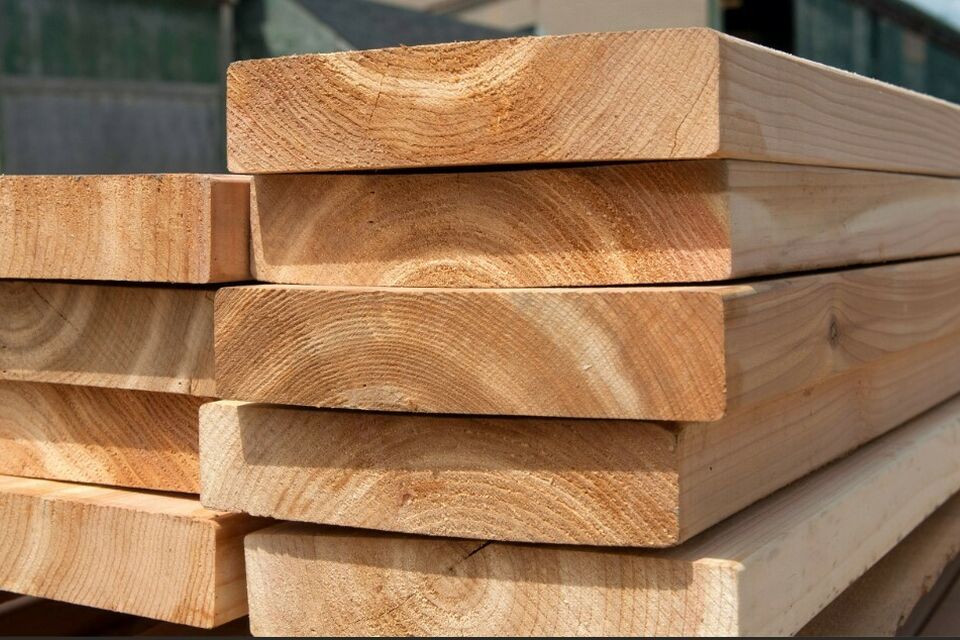Lackluster sales in May continued to put a damper on the lumber market, much to the dismay of traders and mills who tried in vain to inspire sales and move inventory. Prices fluctuated as, week to week, there seemed to be a favored dimension or category that showed some life and a potential run. However, whatever excitement that was building quickly lost steam and usually petered out by week’s end. While some products held their ground, others faltered leaving an overall net result of a flat-line market. As the month progressed, wildfires in Western Canada and announcements of mill curtailments and extended shut downs still weren’t enough to instigate much, if any, of a reaction from buyers.
In this post-pandemic economy, fear-instigated buying appears to have taken a back seat to prudent purchasing.
As economic uncertainty concerns take up more real estate in the lumber buyer’s headspace, frugal and calculated purchasing decisions prevail over efforts to beat the market or risk suffering from too much inventory when tempted with the “deal of the day”, which can quickly become a bad purchase during market corrections.One thing working to the buyer’s advantage is the rare confidence that lumber supplies are ample enough to continue to meet demand, which was evidenced by the daily volume of offers from traders who were seeking to establish new business with their low prices and prompt delivery.In the meantime (and even though sales here on the Cape and Islands have been good), there are growing reports of projects being scaled back, postponed or sidelined as prospective customers take a more cautious position. As the market bounces along while buyers and suppliers vacillate on prices, we anticipate that it will likely follow the same pattern for June, but firm up as we get closer to July as mills prepare for shut downs, which typically tightens supply.
Very few products today are made to the quality that they were not so long ago, and lumber is no exception.
What does make lumber an exception to just about every other product is that it is a one-element product: wood. It’s not a composite of various materials (such as plastics, metals, chemicals and adhesives), with each relying upon the performance of the other. Lumber is harvested from the forest, milled straight from the log and sold, for the most part, in its natural state. The quality (or what makes wood “good”) is 100% reliant upon the mill’s ability to obtain good timber, handle it properly (by controlling the moisture, kiln-drying and milling), interpret the appearance and execute care in the packaging. Of course, the lumber must meet the minimum criteria set by the agencies that regulate grade stamps but, keeping this in mind, we need ask why lumber isn’t as good as it once was. The answer is that “good timber”, the old growth (slow to mature, with tight growth rings and less apt for movement) has become so scarce that we have to rely upon new growth (fast to mature, wide growth rings and prone to movement). And even though the lumber must still meet a specific standardized criteria for strength and appearance to be given a grade stamp, a generally poor looking board with knots, bark wane and other very noticeable “defects” can still meet the grade per the rule book.
A solution to obtaining better looking stock is an option called “Premium” which, although not a true grade (and not sold as a separate product by every lumber mill), is lumber that has met the grade but is better in appearance than the standard product. Cape and Islands contractors, as a whole, have always demanded higher-quality products. Over the past decade, regular #2&BTR SPF or alternative species (such as Hemlock-Fir (HF) or Southern Yellow Pine (SYP)), which commonly sell in other markets, will not sell well here. These alternatives come with price concessions, but they are also considered to be lesser-quality stock. To meet the quality demands of our customers, we switched to a high-quality SPF (Spruce-Pine-Fir) “Premium” yard many years ago. SPF is lighter, more stable, and easier to work with and less prone to mold and mildew than HF and SYP. “Premium” SPF is exactly that: premium stock, better than the rest. The best deals don’t forfeit quality, so don’t be led by the price tag but rather by the item itself: a poor quality product will seldom make up for a bargain price. Incidentally, we buy 100% Premium products from the mills that will pull it, as we know that it gains the best yield.
Because Premium can be scarce and not offered by every mill, we will also buy from the mills that don’t pull and sell their Premium separately, but sell it in the general population of their lumber.
These “NPS” mills (No Prior Select) will leave their Premium pieces in as part of their #2&BTR production so units will not, essentially, be cherry-picked. In every case, we shop and buy better quality products because we recognize the value beyond just the price. No one wants more waste on the job site or to wait for replacement stock when your needs are immediate. It may not always make us the least expensive, but it does ensure that our stock will gain you the best yield and the best result for your project, saving you time and money that, in the end, can often be the scarcest resources of all.
Even though it may be easy to think that a 2x4 is a 2x4 when looking at the quotes from your suppliers, oftentimes quality remains a hidden attribute like service: you need to experience it to appreciate it. There can be a world of difference apart in price, appearance and grade with just the slightest change, addition or omission of an acronym, so please don’t hesitate to solicit our professional sales staff for help in deciphering the differences. Thank you for your business!
